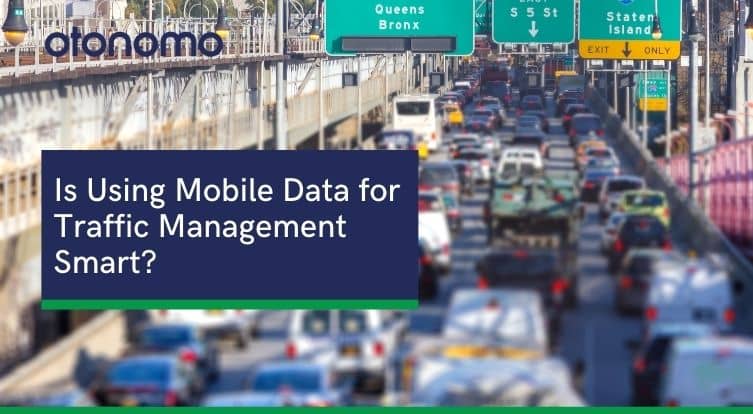Let’s first ask ourselves what is the difference between mobile phone data and vehicle data.
This is a question that we get asked a lot. It usually comes up when service providers are just starting to look at their options for collecting information about traffic for smart cities, mapping and planning, traffic management systems or any number of other aggregate data use cases.
Why can’t I just use mobile phone data? All drivers will have a mobile phone on them anyway!
Let’s break down the answer to this question with a number of key reasons why even on its best day, mobile data can’t reach the heights of connected vehicle data.
Mobile Data Comes with a Whole Lot of Noise…
While mobile data is a low-cost option for collecting information, with many public datasets available. But, it’s difficult to parse the signal from the noise. The noise in this case is the other mobile phones that are on the roads. It is difficult to discern who is traveling by road and who is a pedestrian, or who is using bicycles, public transport or a hybrid mix of transportation options.
You’re also tied to the connectivity of any given location. As anyone who has tried to use mobile phone navigation applications on long drives using a mobile hotspot knows – that connections can be seriously patchy.
When you need to provide data for quick decision-making to enable route planning, congestion management and even emergency services, you need a full and accurate view of what’s happening on the roads.
…Without a Whole Lot of Information in Return
The best-case scenario – you want to know the location of the traveling vehicles, and the speed that they’re going. In most cases, cellular data may show that a cellular phone has left Location A, reached Location B and then reached Location C. However, in most cases it won’t be simple to derive these data points.
The mobile data needs to be cleaned, analyzed and interpreted. Remaining questions may include:
- Does a period of time with no movement translate to the person has reached their destination?
- Has the person stopped for a break?
- Are they in a vehicle idling, or stuck in traffic?
- Are they in an electric vehicle and they’ve stopped to recharge?
Without these answers, you’re not gaining a comprehensive understanding of what’s happening in the vehicle or on the roads.
Feel Confident in Your Data Sets
It doesn’t matter how much data you’re collecting if the data is not of good quality. Unlike mobile data, connected vehicle data is much more accurate. You know for sure that the data you’ve collected comes from a vehicle, not from pedestrians or cyclists in slow-moving traffic. You get a full picture of what’s going on with traveling vehicles, including idling times, engine activity, and niche information such as battery charge levels for EVs.
For fleets, connected vehicle data provides a whole new way to monitor and manage your vehicles, including utilizing data for emergency services, to reduce dangerous driving, assist with preventive maintenance and more, none of which would be possible with a mobile phone alone.
Staying Future Focused with Uber-connected Vehicle Data
The other huge difference with connected vehicle data rather than mobile phone datasets is how much simpler it is to integrate additional information into your analysis. This could be data from your own historical baselines to establish trends or seasonal activity, or third-party information such as weather, hazards or traffic data which can augment the insights you receive from the vehicles themselves.
Fleets can think about the ability to provide added value to your drivers including the fastest and safest routes for last-mile delivery, available parking and reservations for individual users, or the types of vehicles to decommission or double-down on for fleets and corporate car projects.
Mobile Data or Vehicle Data?
As we look at the differences between mobile data and vehicle data, it is clearly evident that vehicle data is multi-layered and multi-purpose data that provides much more information, while powering many more use cases and delivering more insights than mobile data.
The Bottom Line: Not all Traffic Data is Equal
Mobile data, while ubiquitous, may not be the best source for traffic-related data. Connected vehicle data can be used to provide more accurate and comprehensive insights on traffic flows and opportunities for fleets to optimize and streamline their activities.









